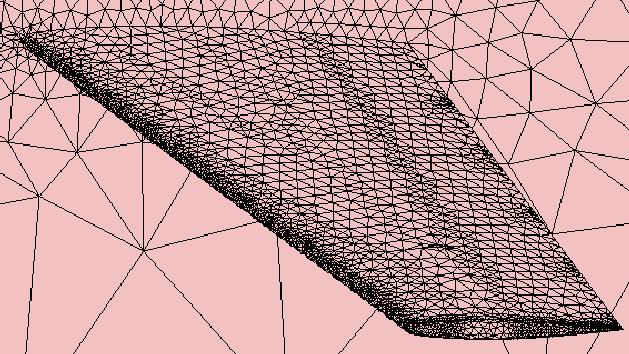
The application of adaptive finite element or finite volume techniques on unstructured 3--D meshes requires the ability to locally alter the size of the elements as dictated by the error indication procedures. One approach to obtain the desired distribution of element sizes is to regenerate the entire mesh using an automatic mesh generator controlled by the given mesh size distributions over the domain. This approach is computationally expensive and introduces the complexities of mapping solution fields from one mesh to another. An alternative approach to obtaining the desired distribution of elements is to locally refine and/or coarsen the mesh. Such local operations can be performed efficiently and can effectively address the issues associated with the transfer of solution information.
Edge-based refinement and derefinement procedures allow for general anisotropic refinement with no over-refinement, and local retriangulation tools which do not alter the local element sizes are used to improve triangulation quality. The local retriangulation tools improve the quality of the elements involved without the need to perform the same degree of over-refinement other procedures may require. This is important since the amount of over-refinement caused by procedures with implicit assurance of element quality maintenance can be very large. The retriangulation procedures are also critical for allowing the proper application of refinement of elements on curved domain boundaries.
Triangulations can also be over-refined when triangulation quality is degrading. The application of refinement on meshes of curved geometric domains, where at each step the mesh is to provide its best approximation to the geometric domain, introduces a number of complexities which are directly addressed by the procedures developed at SCOREC. This is an important addition since the more straight-forward procedures, including all those with a priori control of element shapes, are limited to domains with planar faces.
Since the local mesh modification procedures are invoked directly from within the analysis procedures, and the analysis procedures for large problems are carried out in parallel, it is critical that these procedures run in parallel and scale well. All aspects of this adaptation procedure have therefore been parallelized, and show good speed-ups on large meshes.

